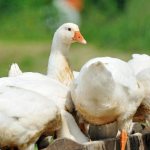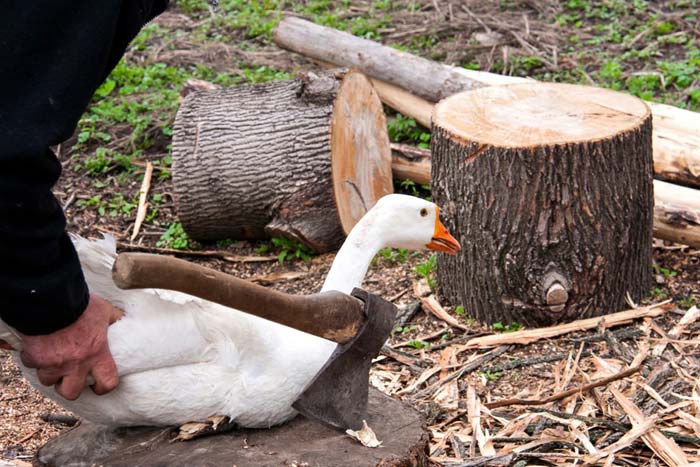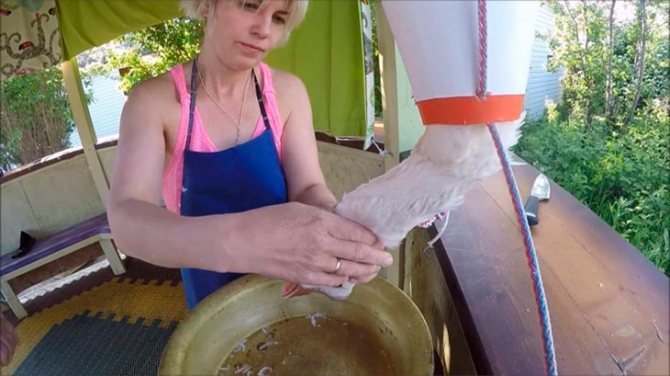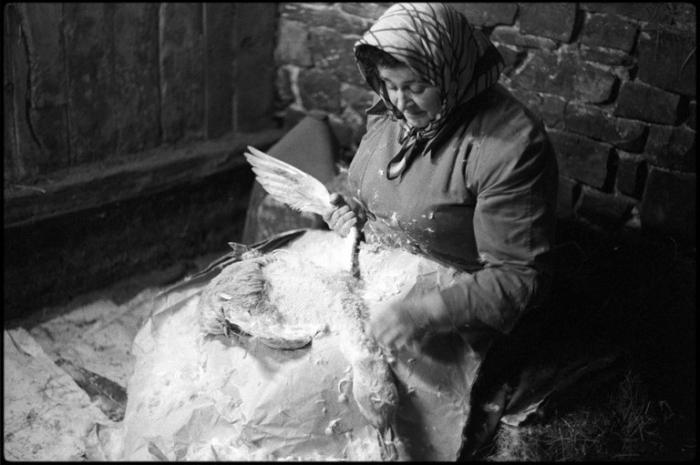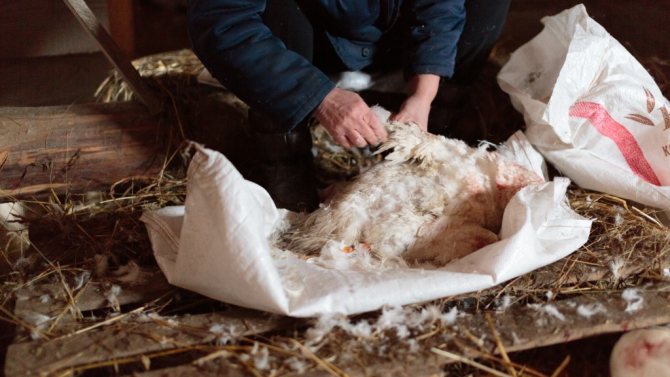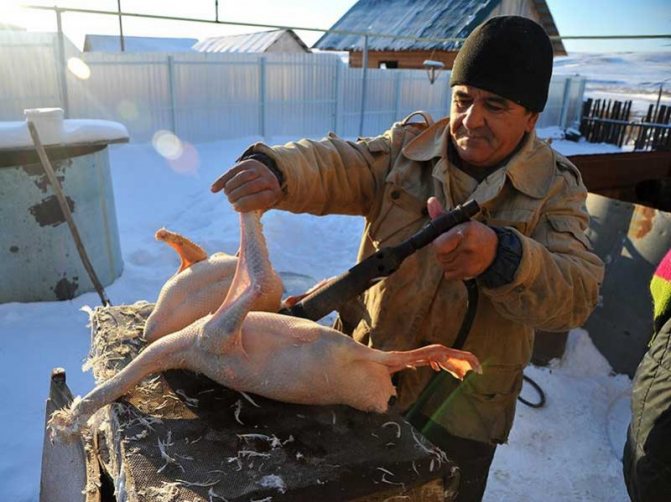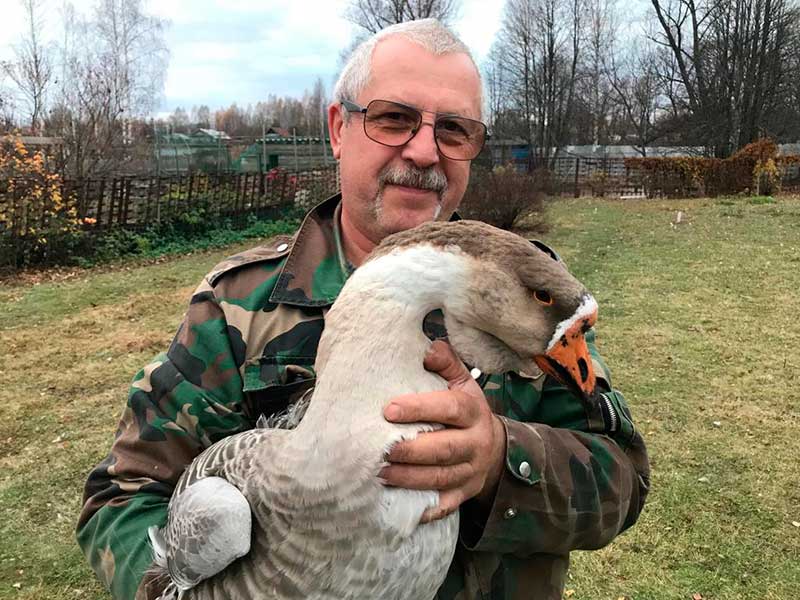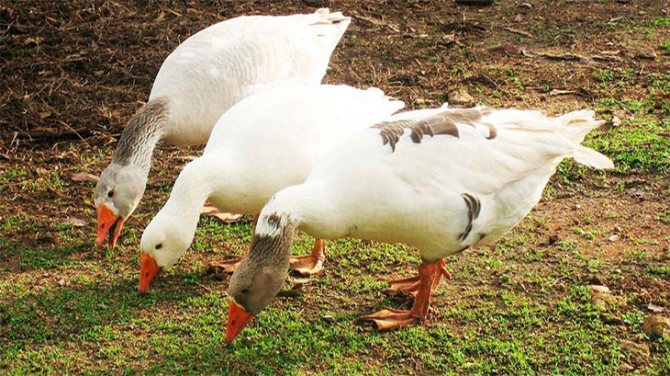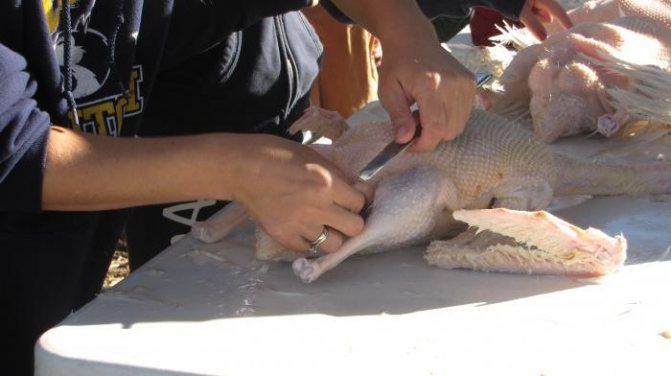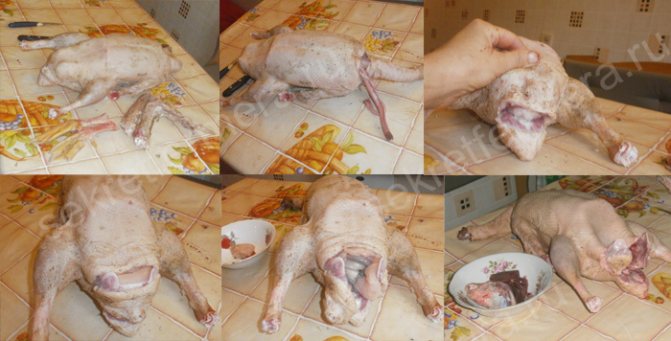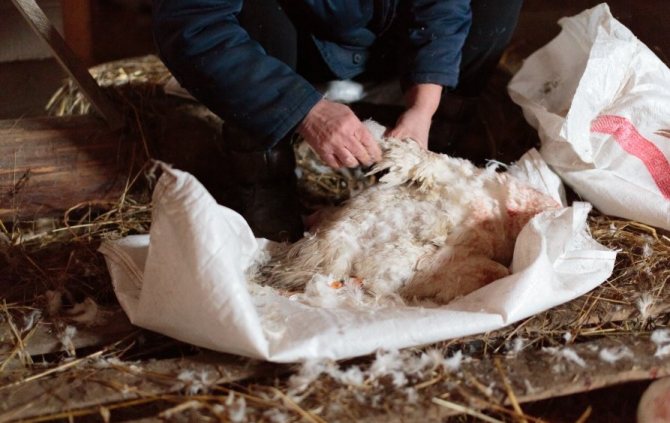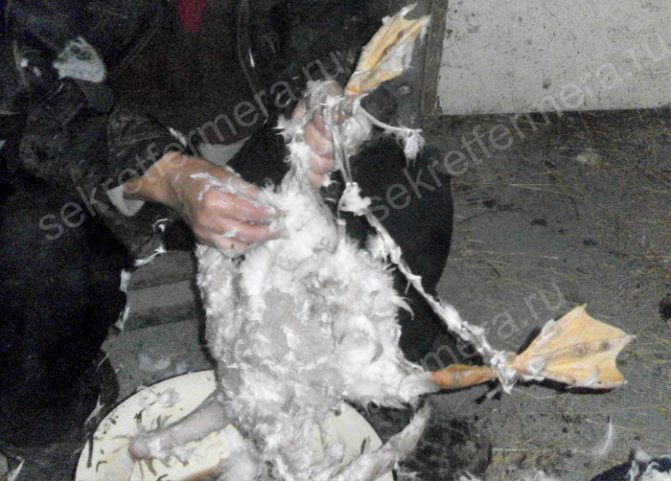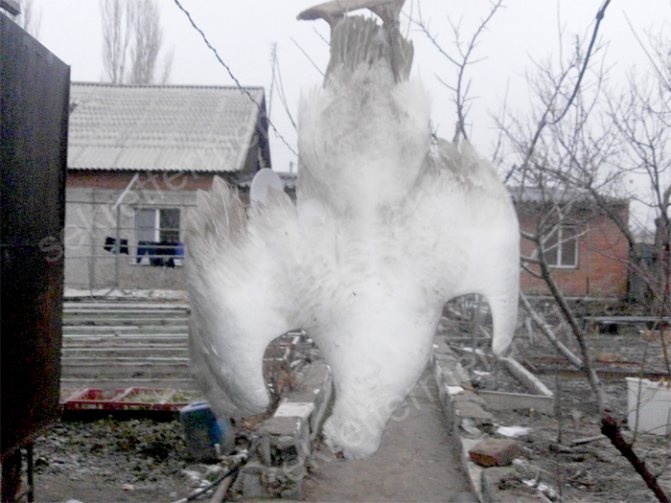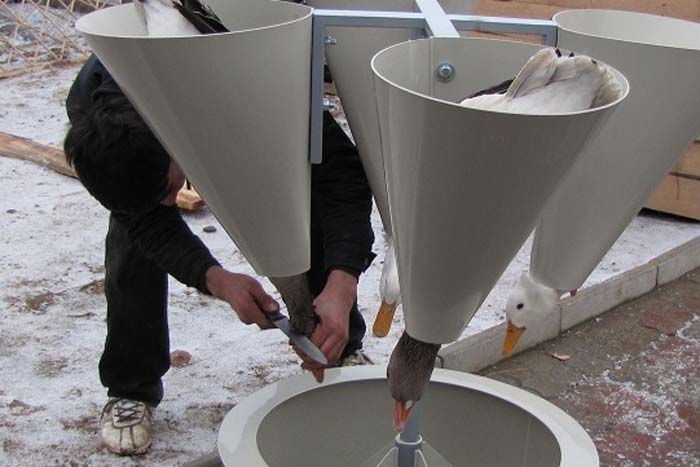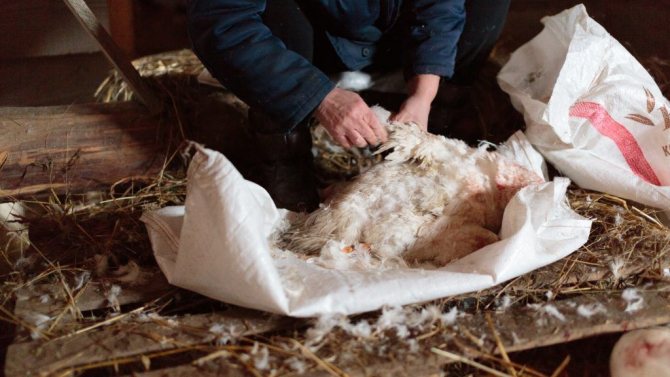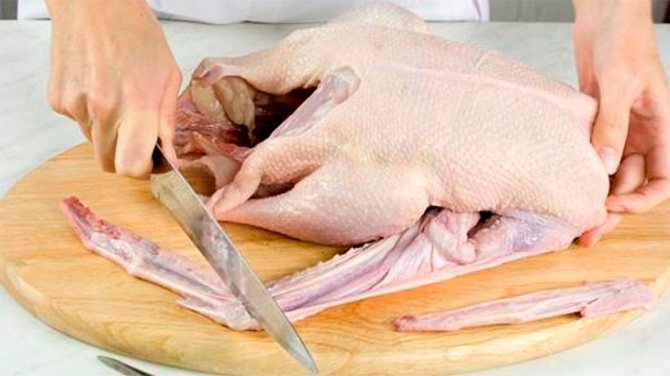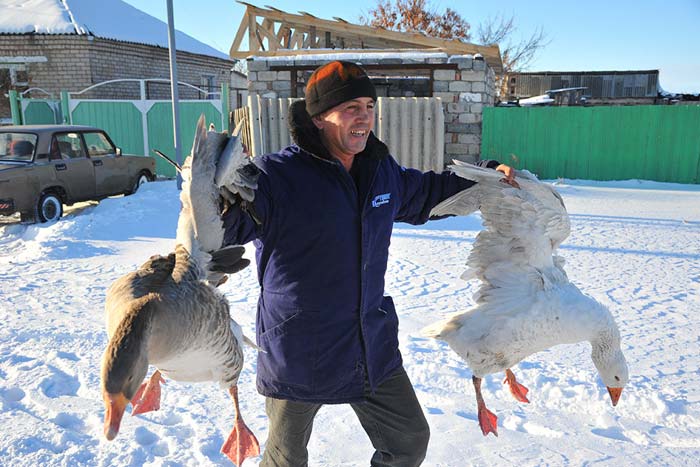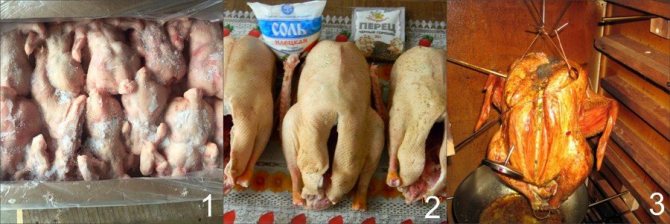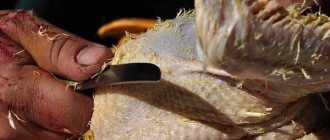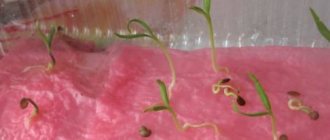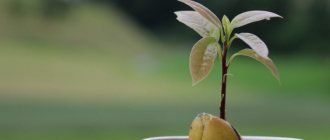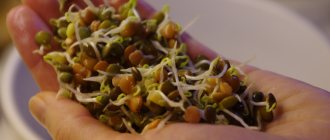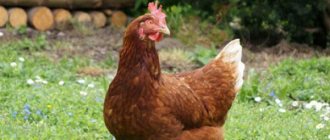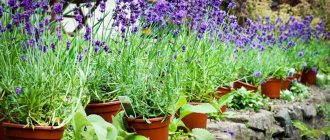Reasons why goslings pinch each other's feathers
People who decide to connect their lives with poultry, at some point, are faced with the question of why the goslings pluck out each other's feathers. They, like many other chicks, look like harmless lumps of fluff, but in fact they can show aggression towards their fellows.

Why do goslings pluck each other's feathers
At first this may seem rather strange, but in reality there are a number of prerequisites for such behavior that must be combated in order not to lose part of the brood. Sometimes it happens that minor lesions that seem harmless become inflamed and rot, as a result of which the goslings can catch blood poisoning, which will lead to death.
Singeing the hairs of a goose carcass after plucking
The method used to remove feathers from a domestic goose is not so important. Based on the desired result, the plucking can be cold, dry, or with boiling water. An important and obligatory step in removing a feather from a bird is to singe it. You will need to get a gas torch (stove) or a soldering iron.
It is necessary to ensure that the skin of the bird does not roll, therefore, when singed, it is slightly stretched. To avoid the appearance of soot on the carcass, it is advisable not to bring the bird too close to the fire source. If this still could not be avoided, it is recommended to roll the meat in wheat flour or bran, due to which it will get rid of the characteristic smell of smoke and acquire a more pleasant taste.
You can watch how the goose is singed after plucking in this video below:
The reasons for this behavior in goslings
It is impossible to answer unequivocally why the goslings nibble each other. There is simply no universal reason for this behavior; it can be due to completely different factors that should be analyzed in detail to solve the problem. There are three main reasons why goslings pluck each other's feathers:
- instinct;
- vitamin deficiency and lack of calcium;
- small area of content.
It is assumed that there are also other reasons that cause chicks to harm each other in this way, however, these remain unknown. In this case, there is a relatively universal solution to the problem, which will be discussed below.
Before trying these or those methods, it is important to first check the instinct option or dietary change. Changing the diet and changing the territory of detention most often leads to a solution to the problem.
Gosling instinct
It's no secret, especially for poultry breeders, that geese themselves are lovers of pinching.
They are ready to pinch almost anything and anyone, according to their nature. When there is nothing nourishing nearby, they have to switch to their fellows in the fluff, leaving bloody footprints and patches of naked body.
If, nevertheless, goslings are pinched solely because of their nature, instincts embedded at the genetic level, it is quite simple to deal with such a manifestation of aggressive behavior with the right approach. There are 2 main solutions to the problem:
- Pecking can occur if there is not enough grass in the diet of birds. It is necessary to give the goslings the opportunity to pinch it.If there is enough grass, the number of victims is minimized.
- The second solution is rather an addition to the first, but this should also be given your attention. To prevent the goslings from plucking each other's feathers, they need to be provided with an alternative. So, you can give them an unnecessary piece of cloth or other harmless material, which they will gladly nibble at their leisure.
One way or another, the goslings' instinct can be tricked if you approach the problem solving wisely, using the aforementioned methods. In most cases, it is recommended to combine them for higher efficiency.
When combining methods to distract goslings, it is important not to overdo it. It is important to remember that young chicks are quite vulnerable both physically and psychologically.
Automatic goose pluckers (feather pickers)
The principle of operation of such devices is based on the use of rubber parts that are capable of plucking carcasses during rotation.
The main advantage is the ability to handle a large number of birds.
A list of common models is presented below:
| Name | Productivity in one day | Time to remove feathers from one bird | Country of manufacture |
| Rotary-950 | 400 units | 20 seconds | Italy |
| Piro | 140-150 units | 40-45 seconds | Italy |
| Farmer's Dream 800H | 60 units | 40 seconds | Ukraine |
There are special drill bits to remove feathers from carcasses. The disadvantage of such devices is low productivity.
Ready-made feathering machine "Sprut-700" for geese


Feathering machine "Sprut-700" works on the principle of a centrifuge.
The main parts are rubber fingers. It allows you to preserve the integrity of the skin of the bird, is universal (can be used for chickens, turkeys, geese), has an antibacterial coating.
Convenient for use on small farms.
Product parameters:
- weight - 55 kg;
- the presence of a single-phase motor (options: 220 V, 380 V);
- frame material - metal profile;
- body material - food grade polypropylene (light shade allows you to control the level of pollution).
Up to 70 carcasses are processed per hour. The quality of feather removal is 93-95%.
The cost of the car is from 50 to 60 thousand rubles. The payback period is 2-3 months (with regular operation of the farm). This model has many positive reviews among farmers.
How to make a do-it-yourself plucking machine from a washing machine
The principle of creating the structure is to use the parts of the old machine as much as possible.


Stages of creating a device at home:
- Remove the motor from the body of the washing machine. Electrical wires also need to be obtained.
- Cut off the hose at the washing machine, seal the holes with sealant.
- Make holes in the drum to accommodate the fingers.
- Cut hard metal plates. Install the part over the bottom of the structure and fasten it tightly.
- Install rubber beaters.
- Make supports for the motor from a steel angle.
- Connect the motor to the drum.
- Connect the motor to the electrical network.
- Attach a rubber hose to the shower head (to keep water in when the machine is running).
- Process a test carcass in the created structure.


Be sure to read:
How to feed the geese so that they gain weight quickly?
You can protect the motor from water by making a plastic box.
Avitaminosis and lack of calcium in goslings
Goslings, like any other animal, especially at this stage of growth, need quality nutrition.
If this is not given to them, they begin to compensate for the lack of nutrients in their bodies at the expense of their own relatives. Usually the smallest and weakest suffer, since it is much easier to harm them.In this case, the aggressive behavior of goslings is not so much a problem as a "symptom" of a more important problem: a lack of nutrients, due to which not only individual goslings, but also their entire group, can suffer.
If the goslings pinch each other until they bleed for the aforementioned reason, it is very easy to solve the problem, but this should be done immediately. It is not hard to guess that their diet needs to be optimized and balanced by adding new foods and substances to it. It is generally recommended that chicks include the following in their diet:
- cottage cheese;
- boiled eggs;
- vitamin supplements.
With proper nutrition, the goslings will not have to pluck the feathers from each other, because there is simply nothing to compensate for, and all the substances and vitamins are in abundance. Lack of vitamins makes the survival instinct work, and this leads to such consequences.
It is important to remember that during the growth period, goslings have the same needs as adolescents during the growth period. That is, the body requires an increased content of vitamins and minerals in the diet.
Carcass cutting
After the blood has completely drained, you should immediately start plucking the bird - if it cools down, it will be much more difficult to do this. After plucking, proceed directly to cutting.
The sequence of actions is as follows:
- Take a well-sharpened knife. It must be treated with boiling water and rinsed thoroughly, and then proceed to cutting. You can also work with special culinary scissors.
- First, an incision is made along the keel along almost the entire length - from the cloaca to the upper third.
- All internal organs are removed through the resulting gap. Not all of them go into writing - the trachea, the lungs with the diaphragm, the esophagus, the spleen, the glandular stomach and the gallbladder, as well as the genitals are thrown out.
- Preserves the liver and gizzard. From it you need to remove the dense cuticle and all contents.
- Next, the head is cut off at level 2 of the cervical vertebra.
- Then the legs are cut off at the level of the metatarsus, and the wings are cut off at the elbow joint.
- The carcass is thoroughly washed under the pressure of cold running water. It is necessary to wait for the water to drain from it completely transparent - this can be achieved after 3-4 cycles.
- If you wish, you can immediately remove goose fat, which is used not only in cooking, but also in cosmetics - for example, they lubricate the cheeks with it to avoid frostbite.
It is interesting. Goose fat is completely harmless to health if consumed in moderation. The fact is that it does not contain cholesterol at all and at the same time retains all the taste qualities of animal fat.
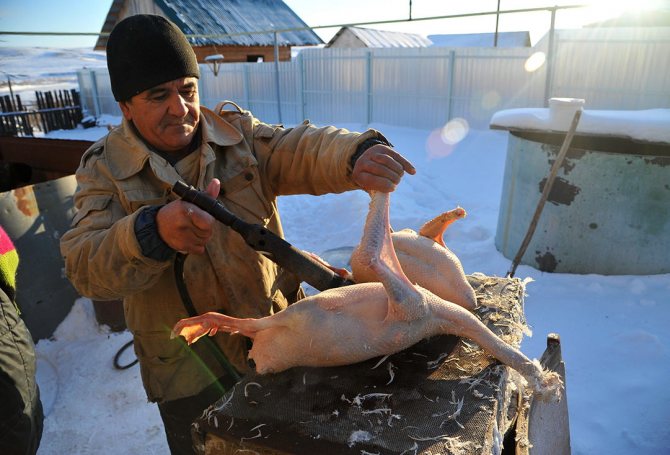

You should pinch the bird before it gets cold.
After cutting, you can cut off all parts individually: goose fillets, wings and legs. You can also separate the fillets from the bones and store them for cooking.
Pecking birds: how to detect in time
Plucking of feathers from geese can occur at any age. However, there are periods of increased predisposition to pecking:
- Period 1 occurs at the age of 25 days. A new plumage appears, a rapid mass gain begins.
- Period 2 is celebrated at the beginning of egg laying.
Pecking causes great damage to the farm. Seeing how relatives begin to pull out the fluff from each other, the rest of the herd is involved in the process. Victims die from blood loss or from infection of wounds on the surface of the skin. Pecking of the cloaca can lead to intestinal prolapse, from which the goose also dies.
To detect this in time, you need to pay attention to the places of pecking:
If bald spots, drops of blood, scratches are observed in these places, urgent measures must be taken. Before treating birds or carrying out prevention, you need to understand the reasons for this behavior.
Outdoor method
There are two methods of slaughtering geese - external and internal.The first is used on farms much more often. It will require a very sharpened knife.
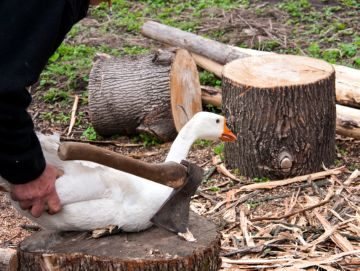

- The bird is taken by the hand by the paws, turned head down and stunned with a sharp blow to the head with a stick.
- A stunned goose is put into a special cone so that its head hangs down from below at ear level (or slightly below.
- Taking the head of a goose in one hand, the other hand pierces the throat with a knife. The blade must be tried to pierce as deeply as possible.
- Then, in one motion, the carotid artery and jugular vein are cut through.
The blood should be completely drained from the bird, since poorly bled meat quickly deteriorates. There is no rush, then the taste of the meat will not be lost, and the carcass will acquire a beautiful neat appearance. When the blood is completely drained, they start cutting.
[collapse]
Reasons for plucking feathers
All reasons veterinarians subdivide into those caused by unfavorable conditions of keeping and physiological characteristics of the bird.
Goslings can be pinched if not properly cared for.
Instinct
The reason why goslings peck at their tails and backs is a natural instinct, the complete elimination of which is impossible. Geese love to nibble on everything: grass, heels of the owner, toes and backs of their fellows. If the birds are not allowed to graze, their instinct will not be satisfied. Then everything that falls under the beak will be used. Therefore, an experienced poultry breeder tries to meet this need of pets. In spring and summer, it is as easy as shelling pears to do it - to let go of the herd to graze. In winter, when the birds are closed in the house, the grass can be imitated with colored ribbons, which will distract the goslings.
Note! The predisposition to cannibalism in birds is transmitted at the genetic level. Most of all, mulard ducks like to pluck.
Another physiological feature of geese is their curiosity. Another breed, with a bright color, tufts, unusual plumage, will attract the rest of the herd. This can lead to feather pecking.
Cloaca changes
If the cloacal ring is stretched, drops of blood may appear, and blood vessels may be damaged. This will draw the attention of other birds, they will begin to pinch this place. Changes in the cloaca may be associated with premature egg-laying. When the goose has not yet managed to gain weight, with the beginning of clutch, the oviduct falls out.
Slaughtering techniques
There is an external and internal method of slaughter, with the former being used by farmers more often.
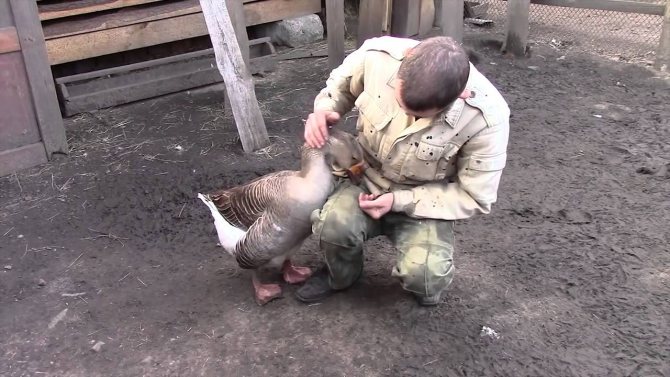

The external method of slaughter is used by farmers more often.
Outdoor method
In this case, the sequence of actions is as follows:
- You should first sharpen the knife well.
- The goose is taken by the hand by the paws and turned over.
- Then he is stunned with a sharp blow to the head with a stick.
- Then a throat puncture is made at the level of the edge of the ear (go a little lower), plunging the knife as deep as possible.
- Finally, the carotid artery and jugular vein are steamed through.
Note. You need to let the blood drain completely. Thanks to this technique, the meat will acquire a beautiful presentation.
Internal method
In this case, the performance technique is different:
- Large scissors sharpen well.
- The goose is tightly tied with a rope, making 2-3 turns.
- The bird is hung upside down on a solid pole.
- Next, the beak is unclenched with both hands and the scissors are inserted directly into the oral cavity and the carotid artery and jugular vein are steamed.
- After that, the scissors are guided deep into the mouth in the direction of the brain. The internal method has several advantages.
- And again you should wait until the maximum amount of blood flows out.
The internal method can be used to slaughter faster and easier, but it is important to have a good understanding of the anatomy of the bird - the main point is to quickly cut the key blood vessels.
The advantage of this method is that the wound is smaller, so less bacteria will get into it.And due to damage to the cerebellum after the introduction of scissors into the brain, the muscles of the bird relax, so it will be easier to peel off the feathers from it.
Small territory as a cause of conflicts among geese
This factor requires special attention. Why do goslings in a cramped poultry house pluck each other's feathers? Keeping geese in a small area leads to their increased pugnacity. They interfere with the movement of congeners and begin to fight for the liberation of space.
Important! Pecking begins with several individuals, the weakest goslings. If the instigators of the conflict are not removed in time, cannibalism will spread among the entire livestock. It is also necessary to separate injured and dead chicks from the herd. Birds, following a conditioned reflex, will want to pluck them first, and then all the livestock.
Sometimes goose cannibalism manifests itself due to a lack of egg-laying sites. The owner must make sure that no more than 5-6 layers are kept in one place, otherwise there is a risk of birds eating eggs.
To avoid bird fighting for territory, you need to adhere to the stocking density standards.
| Goose age | Landing area (cm² per individual) |
| Goslings up to 2 weeks | 230 |
| Young growth from 3 to 9 weeks | 500 |
| Specimens 9 to 17 weeks old | 1000 |
| Geese over 17 weeks old | 1400 |
Thus, enough space will be provided for everyone, the geese will be able to freely approach the drinkers, feeders, and move around the poultry house.
Slaughtering geese at home: the right technique
Among those who carry out high-quality slaughter of geese, two methods are common:
- Outer.
- Interior.
Outer
With the external method, a sharpened knife is used for slaughter. The step-by-step instructions for this technique are as follows:
- Stun the bird with a blunt object on the head.
- Place in the cone with your feet.
- Clasp your head with your left hand.
- Make a deep puncture with a knife in the throat.
- Cut the carotid artery and jugular vein with a sharp motion.
- Leave the carcass for a while to drain the blood. There is no need to rush, because meat that is not completely bled will have a shorter shelf life. On average, blood flows out from 15 to 20 minutes.
- Remove the bloodless carcass from the cone and start plucking.
Video: slaughtering, plucking and singing a goose
Important! It is advisable for a person who is going to slaughter a goose to familiarize himself with its anatomy before this process. He must learn to make precise and quick movements with sharp objects. This will make the slaughter faster, easier and more accurate.
Interior
For the internal method, scissors are required as a tool. It takes less time than the external one, therefore it is more popular.
This is how the step-by-step instructions for this technique will look like:
- Tie the bird's legs with a rope.
- Fold both wings to one side.
- Hang the goose with your paws.
- Unclench the beak.
- Insert scissors into it and cut the jugular and bridge veins in one motion.
- Make a puncture in the palate by pointing the scissors at the back of the skull where the cerebellum is located.
- Spread your wings.
- Let the blood drain.
- After 20 minutes, you can start plucking.
The easiest method used by farmers is to chop off the bird's head with an ax and hang it up for bleeding with its wings spread.
Avitaminosis in goslings: symptoms
An unbalanced diet deprives birds of essential minerals and vitamins. Goslings need micronutrients for full growth and development. Lack of protein, calcium, vitamin B, protein in the feed leads to vitamin deficiency. Youngsters start looking for ways to replenish nutrient stores. Plucking of feathers begins, passing to pecking until blood.
Avitaminosis in goslings
You can determine vitamin deficiency by the following criteria:
- stopping and slowing growth;
- change in feather color;
- lack of appetite;
- poor feather growth.
The right diet to prevent cannibalism
To reduce the likelihood of pecking, you need to take care of the feeding regime: provide a sufficient amount of feed and increase the nutritional value of the diet. As for the latter, the breeder needs:
- mix vitamin and mineral supplements into the feed;
- include grass in the diet;
- provide saturation with fats: meat, bone meal, cottage cheese, fish oil;
- increase fiber content: add carrots and fodder beets;
- increase the salt level to 0.4%.
In addition to enriching the diet, you need to ensure that the feed is fresh. Moldy, sour will lead to infections, which is highly undesirable.
Along with food, it is imperative to provide geese with sufficient water. She should always be in the drinker.
Important! To reduce the aggressiveness of the birds and, accordingly, the tendency to bite, you can make a solution. To do this, sedatives are added to the water and provide access for each bird to the drinking bowl.
Solving Feather Plucking Problems and Prevention Measures
If plucking has already begun, you need to:
- to put the initiators of cannibalism in a separate room;
- distribute geese in the house at the appropriate level of density so that everyone has access to food and water;
- reduce the illumination in the room;
- remove dead individuals from the premises in time (if there are victims);
- to temporarily resettle injured birds;
- ensure the proper level of humidity and ventilation in the house;
- within 3-4 days add salt to the feed (but not more than 1.5%).
Preventive measures:
- Beak trimming. A reliable but unsafe method. This operation can only be done by veterinarians or experienced farmers. It is carried out in goslings at 10 days of age or at the age of 2 months. Beak trimming errors will damage the beak and therefore shorten the bird's life.
- Taking bromine as a dietary supplement that suppresses excessive activity.
- Intake of citric acid in a ratio of 0.02-0.05 g per goose. Duration of admission is up to 3 weeks.
- An increase in the content of animal proteins in the feed (soy products, fish, meat waste, cottage cheese, milk powder).
- Walked geese in the fresh air (there will be something for the birds to occupy their beaks).
- Taking medicines, for example, biovetin in a ratio of 25 g per 500 individuals. The drug interferes with the feed, the course of administration should not exceed 1 month.
Cannibalism among birds has negative consequences. However, it can be avoided by adhering to the rules of keeping geese and observing preventive measures.
Cutting chicken - diagram and video
After removing the plumage, they begin to gut. The intestines and gallbladder are discarded (Fig. 3). The heart and liver as well as the gizzard (without the cuticle) can be eaten. Also, as an additive to bird feed, the following internal organs prepared by cooking are used:
- Spleen
- Trachea
- Lungs
- Glandular stomach
- Esophagus
- Testes and ovaries


Fig. 3. Gutting the chicken: 1 - make a transverse incision on the neck, 2 - remove the neck bone and head, 3 - stick your fingers into the hole and expand it, 4 - carefully cut the tail part so as not to damage the internal organs and spoil the meat, 5 - remove the intestines, 6 - remove the internal organs, 7 - gently bend the skin on the neck inside the carcass, 8 - tie the legs and wings for easier storage
After evisceration, the carcass is washed in cold water and left to cool at room temperature for eight hours. Once it has cooled down, it can be used for cooking or placed in the freezer for storage.
Goslings pinch each other: why and what to do?
At first, little goslings run in a friendly flock, but it often happens that a week or two passes, and yesterday's friends turn into cruel tyrants. They begin to painfully pinch their weaker relatives, pulling out the fluff and pecking the backs to blood. If urgent measures are not taken, this threatens with significant losses of young animals.


First of all, you need to establish the reason why the goslings pinch each other, in order to know what to do next. There are three main factors affecting the aggressive behavior of goslings:
- lack of vitamin;
- cramped room;
- natural instinct.
Boiling water scalding method
The difference between this method of plucking differs from the two previous ones in that the fluff does not fly apart and is easily removed. Down and feathers are clean after scalding, which is an important point for using down in feather beds or pillows. First, boiling water is prepared, and it is constantly heated to a temperature of 90 degrees so that the water does not cool down. There can be a lot of geese for plucking, so there should be enough boiling water for everyone.
A slaughtered goose is taken by the legs and dipped in boiling water. Scalding takes several minutes. When doing this, be careful not to get burned by hot steam or water. The scalded goose is placed on a tray and the feathers are removed along with the stumps.
Over a long period of breeding these poultry, business executives figured out how to pluck a goose with minimal loss of energy and time. The method is similar to the dry one, but only with the use of hot water. The body of the bird is well doused with boiling water or the carcass itself is placed in boiling water for about 7 minutes. The legs and wings must be tied in advance. This procedure is intended to soften the feather. Scalding simplifies the process of cleaning geese with your own hands, but it also has negative points:
- you need to pinch quickly until the bird's body has cooled down;
- you can burn yourself on hot skin;
- feathers become unusable for further use;
- the shelf life for geese is reduced.
Lack of vitamin
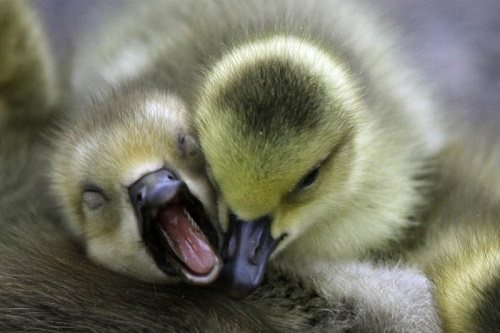

Like any growing organism, little goslings need a balanced diet. Vitamins supplied with food, including calcium and protein, are quickly used up by goslings as a result of their mobility. If the losses are not replenished, the chicks instinctively begin to look for other ways to obtain the necessary substances. They first pull the fluff, and then peck each other to the wounds. The smallest and weakest goslings suffer the most.
To correct the situation, feed for chicks is mixed with special vitamin supplements. In addition, homemade cottage cheese will perfectly replenish the lack of calcium, and boiled eggs will help restore protein reserves.
Cramped room
Goslings need space to be able to move freely without interfering with each other. In crowded conditions, they begin to fight for territory, trying to prove their supremacy. Gradually, several leaders are formed from the flock, which nibble the rest of the chicks. The weakest individuals are sometimes simply pecked to death.
First, you need to select the "offended" goslings and place them separately from the rest. Thus, space will be freed up in the poultry house, and weak chicks will have the opportunity to get stronger.
So that the geese do not have to fight for the territory, it should be noted that for 1 sq. m. you can keep no more than 10 individuals at the age of one month, no more than 4 - at the age of two months and only 2 adult birds.
Natural instinct


The need to pinch something is inherent in the goslings by nature. At the same time, they pull everything into their beak, starting from the backs of relatives, and ending with the hand of the owner. In the summertime, it is very easy to solve the problem by releasing young animals for grazing. Nibbling the grass, the goslings will be full, satisfy their instincts and they will no longer need to "eat" each other.
If the chicks are grown indoors in the cold season, and there is no way to graze them, you can hang cabbage leaves. Pieces of colored matter also distract chicks well.
Conveyor technology in a poultry farm
Large specialized enterprises are engaged in slaughtering and cutting on the stream, using automatic equipment.
The birds are hung on a conveyor belt. They are allowed to calm down for 90 seconds.Following this, the birds are held for 5-20 seconds under a special stun gun to relax the muscles and muffle pain recipes. In this case, the heartbeat remains and makes it easy to carry out further exsanguination.
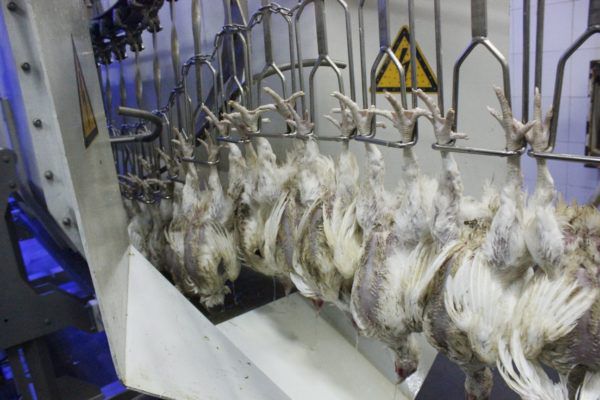

Electric jamming
The birds are killed in the next 30 seconds after stunning. In some factories this happens automatically, in others there is a worker at the conveyor.
Slaughter methods
With the internal method, the head is fixed with one hand, the blood flow path through the beak is cut with the second with scissors.
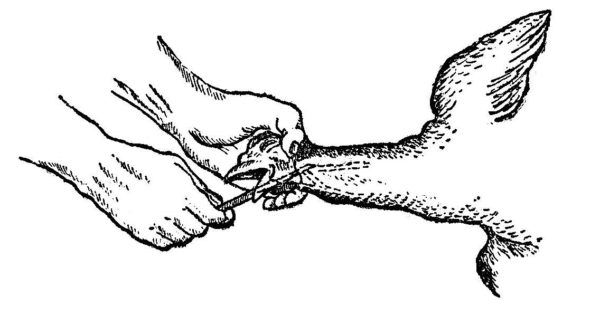

Internal slaughter method
The external method means dissection of the jugular vein (located just below the ear), and arteries (facial and carotid). Then the carcass hangs over the tray for two to three minutes to bleed. This process makes it difficult to separate the feathers.


External slaughter method
Scalding
Eases scalding plucking - hot processing. It is performed with superheated steam or boiling water, and helps to simplify plucking by 80%.
There are several modes of this procedure:
- hard (at a temperature of 60 - 66 ° C);
- soft (at 53-54 ° C).
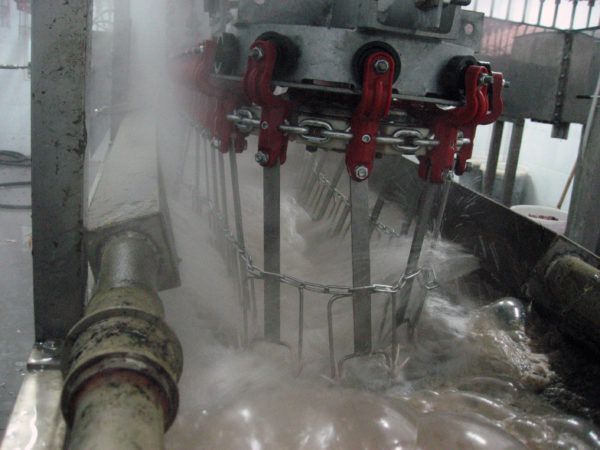

Poultry scald
The first method makes it easy to remove all feathers from the bird, but outwardly such carcasses are not very attractive, in the cold they first become sticky, then turn red and brown.
The second method keeps the carcasses looking good. However, it is more difficult to remove feathers and fluff from them. After machine processing, manual plucking is required.
To remove the feather, plucking machines are used:
- centrifugal machines;
- disc mechanisms;
- beatable;
- finger.
After plucking, feather residues are removed by waxing, which is done by hand or in a special bath. The mass intended for this is a mixture of white paraffin and the same shade of rosin. The cured wax mass with feathers is removed mechanically.
Prevention of pinching in goslings
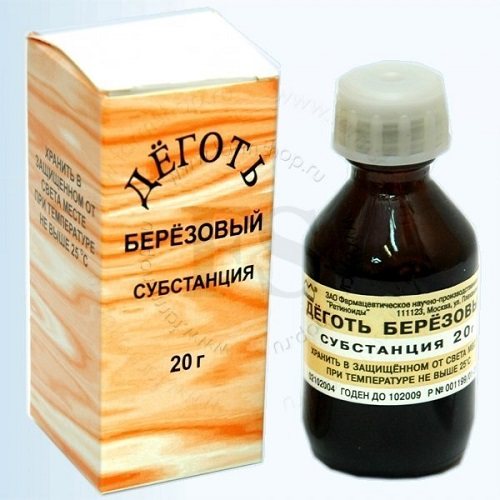

If the goslings receive a balanced diet, regularly graze and live in a spacious poultry house, but still nibble on each other, experienced poultry farmers recommend smearing their backs with birch tar. The unpleasant smell and bitter taste of the substance will discourage the chicks from pinching.
Birch tar also promotes rapid healing of wounds after "pinching".

